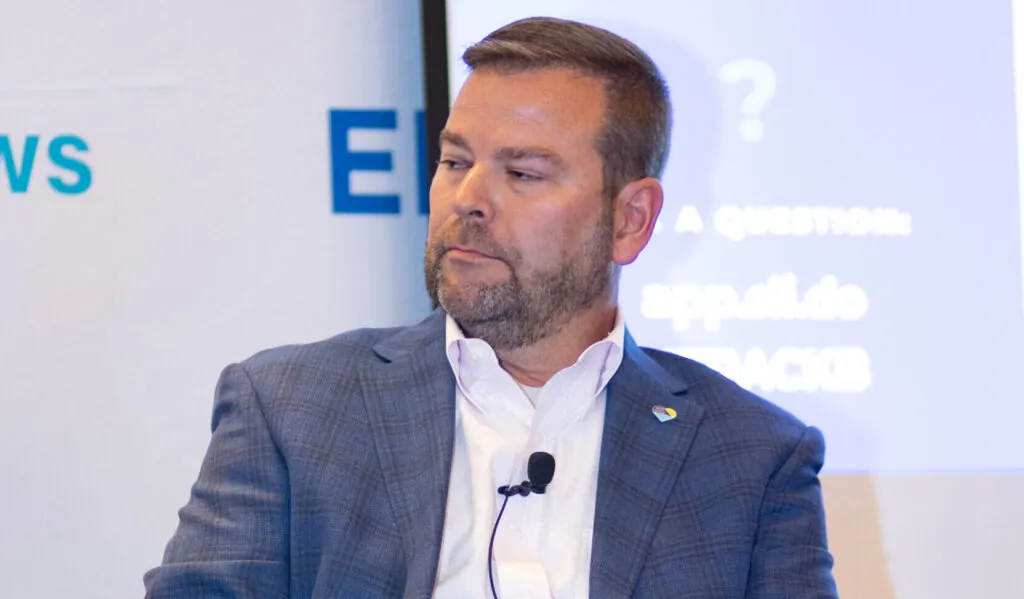Agape Care Group is a company on the move, focused on multi-state expansion in the Southeast quadrant of the United States while continuing to build density in its existing markets.
The hospice and palliative care provider, a portfolio company of Ridgemont Equity Partners, acquired two organizations in 2023, as well as purchases of additional licenses, despite last year’s industry-wide M&A slump. Its acquisitions last year included Birmingham, Alabama-based Hope Hospice and Assured Hospice in Cartersville, Georgia. Financial terms for both transactions were undisclosed.
The Hope Hospice deal expanded Agape’s footprint to 20 Alabama counties. Through the Assured Hospice deal — coupled with a recent de novo in the Gainesville community — Agape covers all 159 counties in the state.
Hospice News spoke with Agape CEO Troy Yarborough about the company’s M&A strategy and outlook for 2024, as well as its growing palliative care program.
 Hospice News / RoboToaster
Hospice News / RoboToasterHospice News really published an article on the top investors and companies to watch in 2024 as far as M&A is concerned and included Agape Care on the list. Do you think we were right to do that?
I believe you were. Certainly that’s been one of our strategies over the last few years, and it’s a strategy that has rewarded us as we built our organization. We’re well capitalized and in a good position, continuing to look for assets that make our company better.
We struggled to find those assets in 2023. We looked and there weren’t a ton of them. And I think you had a disconnect between seller expectations and ultimate valuation. Ultimately, we were not as successful on the M&A front in 2023, as we would have liked to have been, trying to do some smaller acquisitions. But we’d like to continue to make that a core strategy.
In 2023, were people just not selling or was it a matter of finding the right assets?
It was a combination of both. We certainly didn’t see as much availability. And then what we did take a look at, unfortunately, we just did not find, from a clinical quality perspective, assets that we felt like made our company better.
The worst thing that we could do is bring something in that muddies the waters just a bit. That’s not what we want to do, and that’s not what we’re about.
How many transactions did you have in total last year?
We did a couple smaller little tuck-ins and license acquisitions. We did a total of four, and what it did was it gave us either density in markets that we were already operating in or [it] gave us an opportunity to plant a flag in a new market.
I think we’ve been pretty successful at stretching in the southeast quadrant of the United States from Oklahoma to the Carolinas. The Southeast is fair game in terms of areas and markets that we want to take a look at.
We’re looking at Missouri, Kansas, Oklahoma and then down through Louisiana, through the Carolinas, up to Virginia. So we’ve got a nice little envelope of operation that we feel like gives us continued opportunity for execution that would be organically growing in some of those markets.
That’s a nice mix between [certificate of need (CON)] and non-CON states when you look at the composite of availability and where we could do M&A, and startup activity in several states as well.
What are some of the challenges of spreading out your geography, going from managing a hospice that covers a few counties to an organization that’s in multiple states?
You have to be intentional about creating consistency in your operation. You have to have the right infrastructure. You have to have the right leadership model. You have to have the right culture and cadence around establishing a business that looks the same, not just on the same [electronic medical records (EMR)] system, but how we operate, how we serve the culture of the company.
We’re very intentional about ensuring that we have the right leaders in place who understand that we run a homogenized operation. So our Oklahoma operation looks like our South Carolina operation, which looks like an Alabama operation. We want that consistency, because that is how we can best deliver care to patients.
What’s guiding your M&A strategy in 2024?
It’s one of our three areas of focus. In terms of what’s guiding it, we’re looking for creative opportunities to buy good cultures, good businesses that fit into our family and help either densify in the markets that I’ve outlined or help us enter the states that I outlined in the Southeast quadrant. If we have an opportunity to enter one of those additional states, we’ll look at that seriously.
But we’re really big on density. We’re big on creating identities in the communities that we serve, and the way that we do that is we have branches that are more sizable with larger numbers of employees that give us faster response time and make us a better provider.
Beyond M&A, what are some of your growth plans?
You have to continue to stay focused on the organic side. You have to continue to stay ahead of the labor headwinds, and we’ve been very successful. But back to the density comment, we’ve been very successful because of the density in the markets that we serve, principally Georgia and South Carolina.
We’ve been able to avoid any interruptions and our ability to serve new patients. So it hasn’t slowed us down organically, whereas other hospice providers, maybe have some of those [labor] headwinds. We’ve been very blessed and fortunate to not have those.
We’ve been successful as well from a de novo perspective in finding an opportunity to build versus buy, and round out in markets where we see opportunities to stand up and grow and develop our model in new geographies.
What other priorities are top of mind as we move into 2024?
We have an emerging palliative care model that we’ve laid down in North Carolina and South Carolina. We want to continue to work to build that platform as a meaningful way to engage patients who want an end-of-life journey earlier in that process, so that we give them the right care at the right time, appropriately.
We also do more upfront education on the hospice benefit, catching those patients earlier, serving those patients in a much more meaningful manner than we have in the past. I think that is a huge priority for our organization.
And then the continued focus on quality improvements, we’re working on everything from [Consumer Assessment of Healthcare Providers and Systems] scores to live discharge rates and all of the quality metrics that you look at to ensure that you’re every year we’re continuing to improve the service that we’re providing in the communities that we serve.



